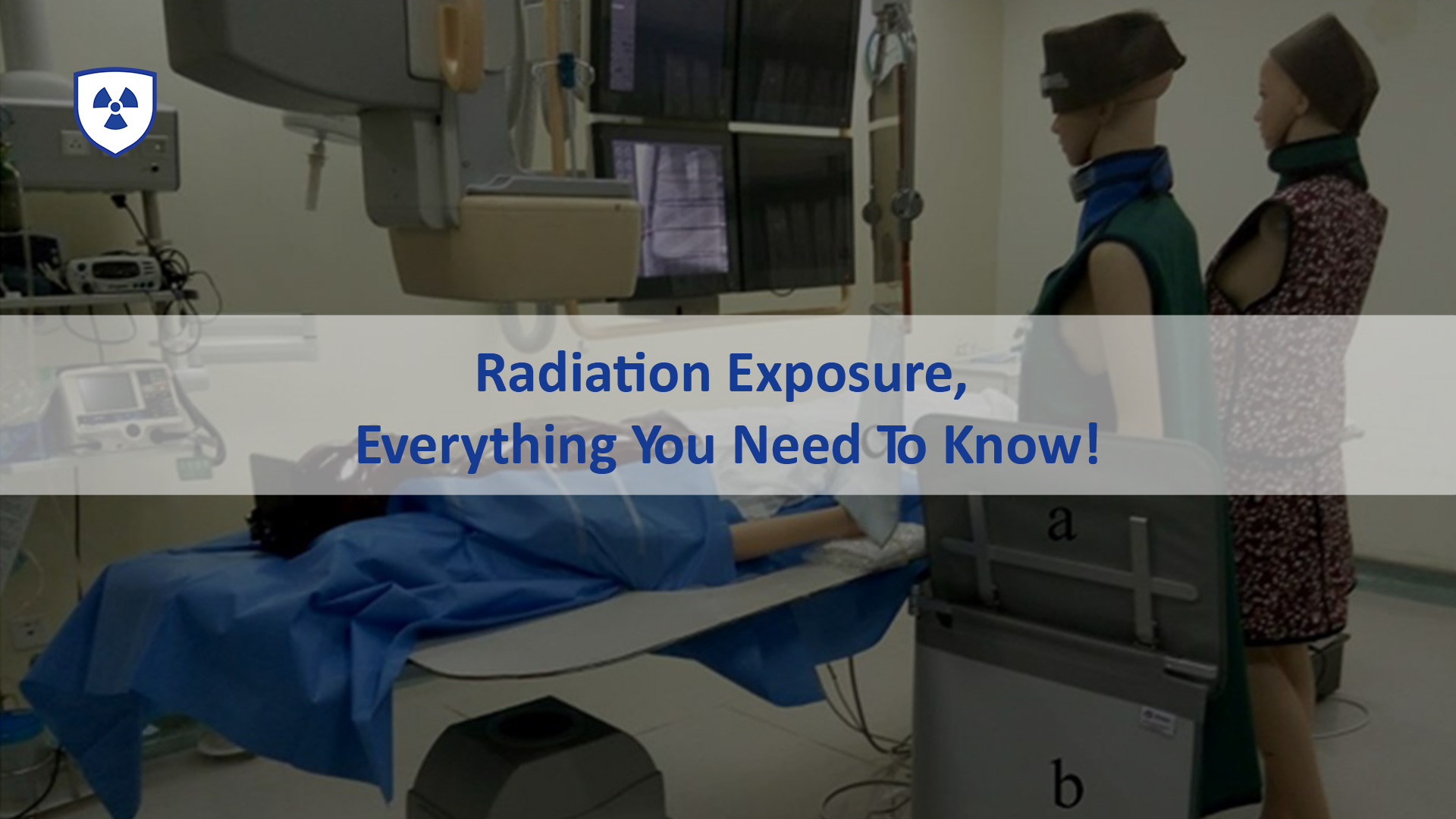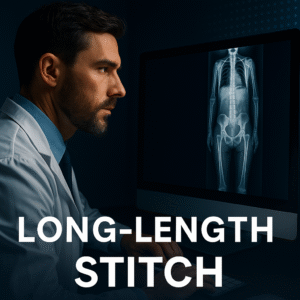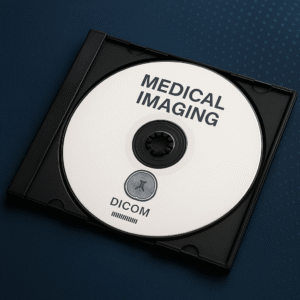Radiation exposure x-rays ionize human tissue and deposit energy that can cause harmful changes within the body (break the DNA chain). There is a cancer risk from x-rays. the dose of radiation is cumulative. x-rays are considered for carcinogen list.
the government is attempting to avoid the use of unnecessary CT scans and x-rays to avoid unnecessary exposure to radiation. This highlights the cancer risk. Doctors need to pay close attention to the risk involved with the use of x-rays. The cancer risk associated with radiation exposure is documented in cases of atomic bomb survivors. Actually it is vitally important to calculate radiation dose. The risk for medical uses is controversial and usually played down by physician. Radiation at a high level is carcinogenic. So it is crucial to invest in the dose management system.
Safe level of radiation exposure
The level of radiation from x-ray exposure is low. The effects of low-level radiation is not known so what is the safe radiation level?
The safe level is not known. It is known that CT scans, fluoroscopy, mammography and x-rays expose the public to a high level radiation especially in young females. The risk of exposure should balance the medical benefits. Optimize radiation doses by exposing the patient only to enough radiation to get a clear image. There is a growing concern about the risk associated with giving a patient large doses of radiation. The use of CT scans has increased recently in adults and children possibly exposing the patient to an unnecessary high dose of radiation. CT scan is the method most often used to diagnose cancer, diseases, fractures and it exposes the patient to a much larger dose of radiation than x-rays. Radiation from CT scan of the pelvis equals the same amount as a hundred chest x-rays.
Children are ten times more sensitive to radiation than adults. Three to four million children receive CT scans and about 1500 of them will develop cancer two decades later. Children should not be given an adult dose of radiation. That’s why Calculating radiation dose is an increasingly important field in diagnostic radiology. It is possible with Radian.
Radiation Dose Limits
CT scan of the pelvis has the highest level of exposure to the skin, marrow and gonads. use a mini fluoroscopy CRM whenever possible.
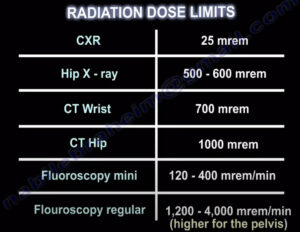

radiation exposure with fluoroscopy
fluoroscopy emits a lot of radiation. The closer the extremity is to the radiation source, the higher the dose of radiation the patient receives. When the distance from the beam increases, the dose of radiation is less. Radiation intensity follows the inverse-square law. it is all about distance. if the intensity of radiation at 1 meter from the source is 100 mR/hr. then the intensity of radiation at 2 meters from the source is 1/4 or 25 mR/hr in same unit area. At 3 meters from the source the intensity of radiation is 1/9 the original or 11.1 mR/hr.
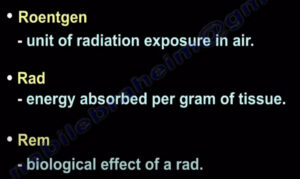
There is less exposure to the physician when imaging a smaller body part. larger body parts create an increased exposure to the physician when imaging a patient with the C-arm.
do not be in the direct path of the radiation beam.
Protection
radiation protection is of importance with monitoring, shielding and position. monitoring protection should be used with Radian. Radian is a solution that have been developed and used for radiation dose data collection and analysis, and have been proven useful for optimization. Dosimetric methods are used in radiology departments for a variety of goals including the determination of patient dose levels to allow examinations to be optimized and to assist in decisions on the justification of examination choices.
Shielding protection of fluoroscopy radiation lead gowns and aprons work to stop exposure. lead aprons attenuate scattered radiation by about 95 percent.
rapidly dividing cells are most sensitive to radiation exposure such as:
- sperm
- lymphocytes
- small intestines
- stomach
radiation damage seldom appears at the time of irradiation. The first effect of radiation damage is usually seen as a drop in the white blood cell count. the first external sign of damage is seen as a skin burn. Studies suggest that people who use fluoroscopy extensively have a higher rate of cataracts.
Early effects of radiation exposure
early effects of radiation exposure could include:
- deaf
- hematologic depression
- chromosome aberration
- skin erythema
- epilation
CT-scan examination is usually done without justification by most insurances. it is of the opinion that 1/3 of CT scan studies that are given could be avoided. Giving unnecessary studies causes an added cancer risk with no benefit. The CT scan study should be justified. there is no close oversight or uniform standard in order to eliminate radiation exposure. This must be done.
Patient education is important as well. The patient should ask if the study is necessary and what is the lowest dose possible that can be given without compromising the study. There should be a universal x-ray bank where patient’s x-rays can be accessible anywhere from any Hospital. This would avoid the unnecessary repeating of x-rays. In summary, the bone marrow, breast tissue, gonads and lymphatic tissue are susceptible to radiation induced tumors. it’s vitally important to shield the gonads from exposure. Always wear lead aprons and monitor the radiation exposure with Radian (dose management system).
